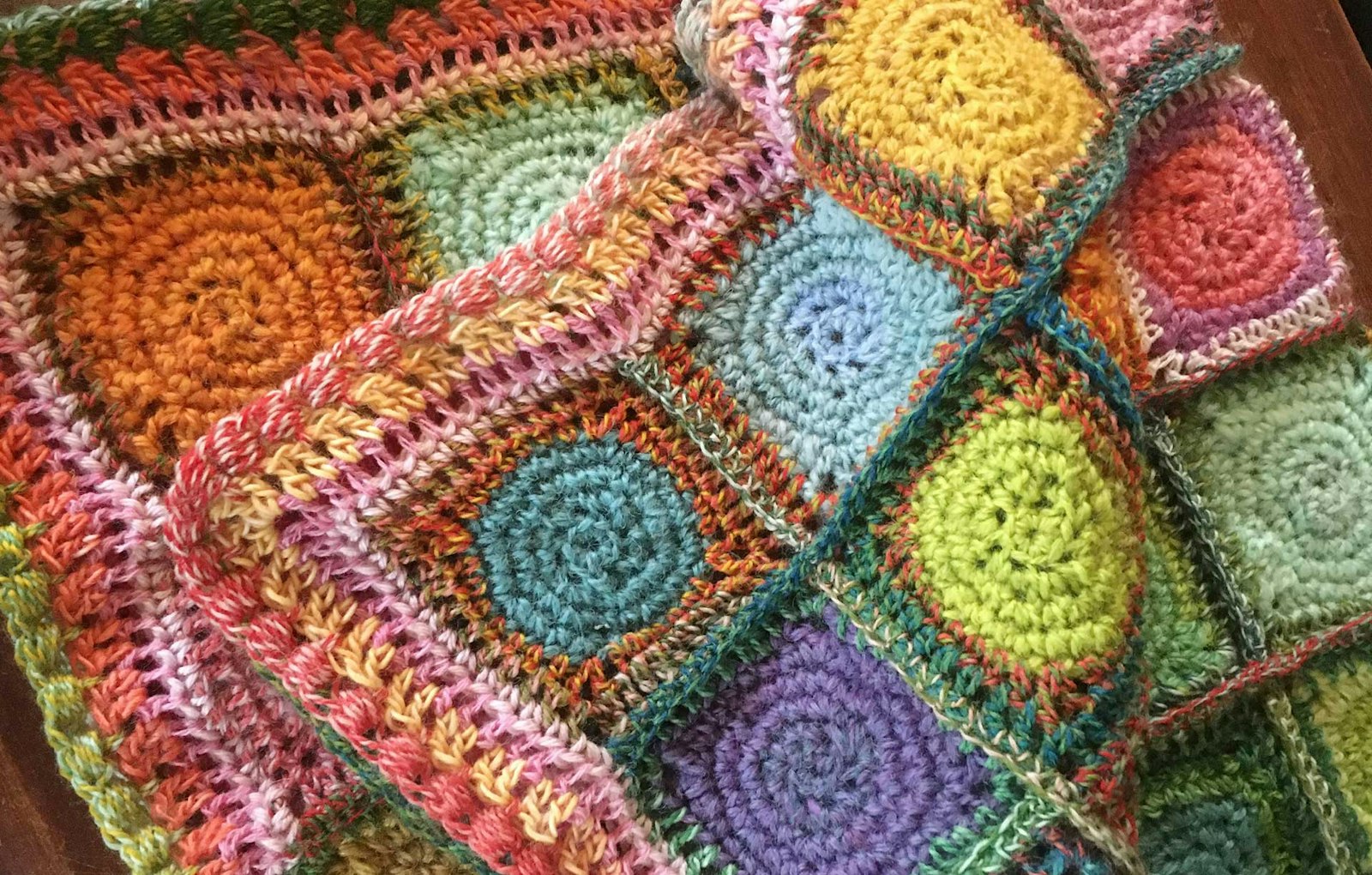I am a freelance illustrator of children’s books. Also, I stitch freestyle embroidery, design teddy bears under my brand name Pussman & co on Etsy, and I like to make all kinds of stuff on the sewing machine, especially bags. I always use a lot of color in my work and never use just plain colors.
I became a handspinner about three years ago. A friend of mine had wanted to learn to spin for a long time, and there was a two-day spinning class in our village, so she asked me to join her. Truthfully, I was not really tempted to do this because I thought, “I don’t want all of that fluffy wool flying around in my living room.” But in support of our friendship, I went along, and it turned out it wasn’t all that fluffy. I was hooked instantly. In the first class, after a few hours of spinning chunky, curly, over-twisted wool yarn, I made a spindle out of a chop stick and a Meccano wheel. I learned to draft using the park and draft method on that handmade, wobbly spindle. I ended up ordering an Ashford Kiwi wheel the next week, and a few months later, I bought a Schacht Matchless.
This crochet project began when I needed to make a small blanket for my first grandchild, Lilly. I had a lot of hand-dyed roving, including Romney, Merino, and other unidentified fibers, that I had received as gifts. The spinning fibers were just sitting in a bag and taking up space in my house.

Left: Danielle’s granddaughter Lilly is the fortunate recipient of the colorful blanket. Right: Danielle with her dachshund.
I am fond of the neutral scarf designs of Sophie Digard and the colorful scarves from A Very Fine Yarn (@sophiedigardofficial and @averyfineyarn on Instagram, respectively). But these scarves are all made of fine yarns, threads, and embroidery floss, and I just don’t have that kind of patience. Using these designers as inspiration, I thought it would be fun to invent my own blanket, using my hand-dyed fibers for the project. Also, since I spin to relax, I didn’t want to overthink the spinning. The blanket had to be a mix of different weights of yarn.
I made the crochet pattern up after watching a YouTube tutorial about how to turn a circle into a square. I started crocheting circles within a square outer border, but some ended up being larger than others. That was kind of a problem. If the circle was already too big, the final square would certainly be too big, as well. I decided to leave those thicker yarn circles as they were and make the smaller ones into squares.
In addition, I was trying to figure out what color to use to bind all of the squares together, and nothing appealed to me. I took a look at my yarn stash, the leftovers from a lifetime, and even unused sock yarns. I came across a ball of yarn, Schoppel Wolle’s Zauberball Crazy, and it matched perfectly with all of my colors. Although the yarn was thinner, that was no problem because I used the same crochet hook. The looser gauge gave my blanket a really drapey feeling that I found very nice. And the thinner yarn stretched in all directions, filling in spaces where my circles and squares were uneven. This allowed the blanket to lie flat.
Spinning Notes
Fiber preparation I used hand-dyed roving, making rolags and mixing different colors on my handcards. The new blends became slight variations of the original colorways.
Wheel system/spindle I used suspended and Turkish spindles. My preferred spindles are made by IST Crafts on the Isle of Wight in the United Kingdom.
Drafting method I work fast and always allow some twist in my yarn supply. I draft while my spindle turns and spin without thinking. I like to call this yarn “my default thickness,” but the thickness can vary a little.
Singles direction Z-spun.
Singles wraps per inch About 22 wpi.
Ply wraps per inch About 11 wpi.
Yarn classification/weight Handspun, about worsted weight; commercially spun wool sock yarn, Schoppel Wolle’s Zauberball Crazy.
Crochet hook Size 10 (8 mm).
Finished size 31½" × 39½" (80 ×100 cm).

Danielle used small, colorful bits of handspun for her blanket.
Find the pattern for Lilly’s Blanket at pussman.etsy.com, and follow Danielle on Instagram, @pussmanandco.
Have a finished object to share? Tell us about it! Contact [email protected] to submit your project.

